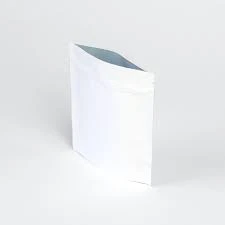types of varnish
Types of Varnish A Comprehensive Guide
Varnish plays a crucial role in the finishing process of wooden surfaces, providing both protection and aesthetic appeal. It acts as a protective film, shielding wood from moisture, dirt, and abrasion while enhancing its natural color and grain. Understanding the different types of varnish available can help you choose the right one for your project. Here, we will explore the main types of varnish, their characteristics, and typical applications.
1. Polyurethane Varnish
Polyurethane varnish is one of the most popular types used in residential and commercial projects. It is a synthetic resin that offers excellent durability and resistance to water and chemicals. Available in both oil-based and water-based formulations, polyurethane varnish is ideal for high-traffic areas such as floors and tabletops. Oil-based versions provide a rich, amber finish, while water-based options dry clear and are less odorous.
2. Oil Varnish
Oil varnish is a traditional finish that consists of natural oils, resins, and solvents. It penetrates the wood deeply, enhancing its grain and providing a warm finish. While oil varnishes take longer to dry compared to synthetic options, they are easier to apply and repair. This type of varnish is often used for furniture and cabinetry, giving a timeless look that appeals to many homeowners.
3
. Acrylic VarnishAcrylic varnish is a water-based finish that provides a clear, durable protective coat. Since it dries quickly and emits fewer harmful fumes, it is a popular choice for indoor projects. Acrylic varnish can be used on various substrates, including wood, metal, and crafts. It is resistant to UV light, which helps prevent yellowing over time, making it suitable for outdoor furniture as well.
types of varnish

4. Spar Varnish
Spar varnish is specially formulated for marine applications and outdoor usage. It is designed to withstand harsh environmental conditions, such as moisture, UV rays, and temperature changes. Made from a combination of oil and resin, spar varnish provides a flexible finish that prevents cracking and peeling. It is commonly used on boats, outdoor furniture, and other surfaces exposed to the elements.
5. Shellac
Shellac is a natural resin derived from the secretions of the lac bug. It has been used for centuries as a finish for woodwork. Shellac dries quickly and offers a warm, amber hue, making it an attractive option for antique restorations and fine furniture. However, it is not water-resistant and can be damaged by alcohol and heat, limiting its use in some applications.
6. Nitrocellulose Varnish
Nitrocellulose varnish is a fast-drying finish that is commonly used in the woodworking industry. It provides a clear, hard surface that is easy to apply and can be sanded and re-coated. This type of varnish is often used for musical instruments, cabinetry, and furniture. However, it is important to note that nitrocellulose varnish emits strong fumes during application, necessitating good ventilation.
Conclusion
Choosing the right type of varnish depends on the specific requirements of your project, including the intended use, desired appearance, and environmental conditions. Whether you opt for the durability of polyurethane, the traditional appeal of oil varnish, or the flexibility of spar varnish, understanding these options will help you achieve a beautiful and long-lasting finish. Always ensure to follow the manufacturer’s instructions for the best results, and consider testing the varnish on a small area before full application. With the right varnish, you can enhance and protect your wooden surfaces for years to come.













